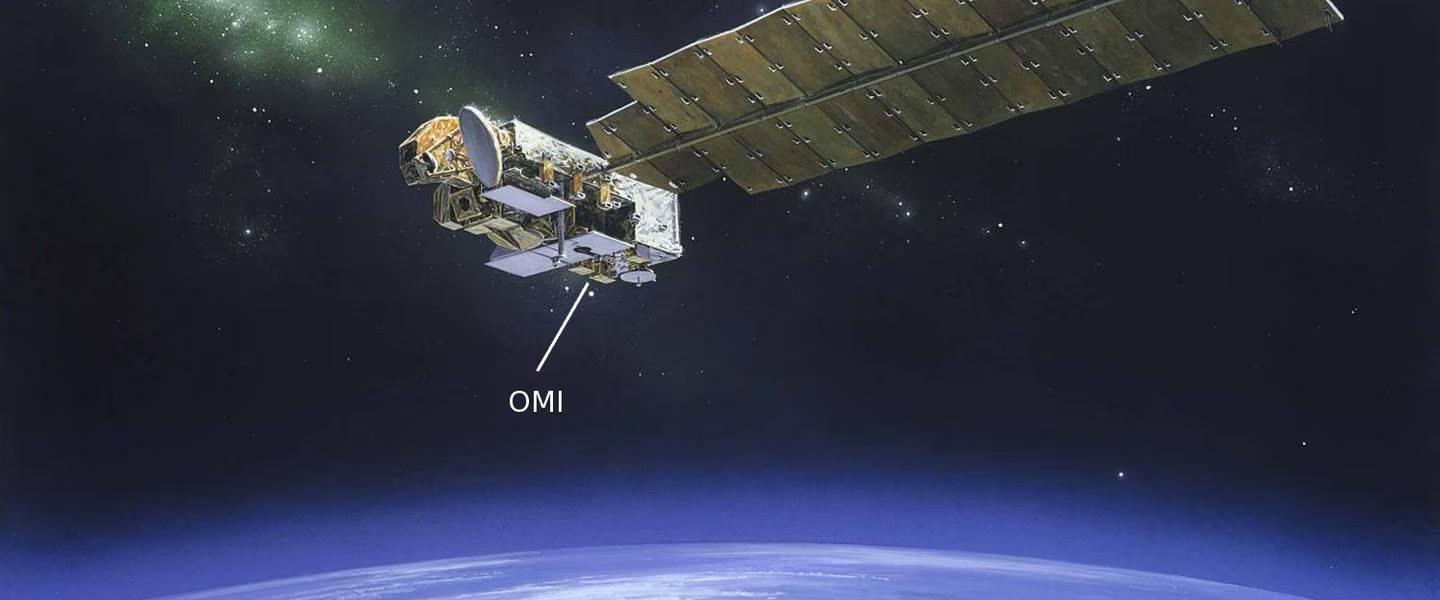The OMI instrument is composed of the following three elements (test):
- Optical Assembly (OA) , consisting of the Optical Bench (OPB), two Detector Modules (DEM), and Thermal Hardware
- Electronics Unit (ELU), performing CCD readout control and analog-to-digital conversion (ADC)
- Interface Adaptor Module (IAM), performing Command Buffering as well as the Data Formatting and Satellite Bus Interface functions.
Observation modes
The main observation modes for OMI are the Global measurement mode, the Spatial zoom-in measurement mode and the Spectral zoom-in measurement mode. The Global Measurement mode is the default mode and samples the complete swath of 2600 km for the complete wavelength range.
The ground pixel size at nadir position in the Global mode is 13 × 24 km² (along × across track) for the UV-2 and VIS channels, and 13 × 48 km² for the UV-1 channel.
Spatial Characteristics
The Intrinsic Field-Of-View (IFOV) is defined as the FWHM of the pixel response curve obtained when moving a point source in swath and/or flight direction.
The IFOV of a sub-satellite OMI CCD-pixel is about 3 km in the swath direction and about 10 km in the flight direction.
In the swath (across track) direction, 4 or 8 pixels are binned to a ground pixel of 12 or 24 km. Futhermore, OMI measurements are co-added during 2 seconds. With a ground speed of the Aura spacecraft of about 7 km/s, this results in ground pixel size of 13 km in the flight (along track) direction.
Note that a measurement contains some information of the outside the 13 km in the flight direction, due to the IFOV of 10 km.
Note The ground pixel size of the UV-1 sub-channel [270-310 nm] is twice as large in the swath direction compared to the UV-2 sub-channel and the visual channel. This is due to the optical design of the UV channel in order to reduce straylight in this wavelength range.
The pixel-size in the swath-direction increases from 13 × 24 km² (exact nadir position) to 13 × 128 km² at the most outer swath-angle (57 °).
Spectral Characteristics
| Channel | Total Range (nm) | Full Performance Range (nm) | Average Spectral Resolution (FWHM) | Average Spectral Sampling Distance (nm/pixel) |
|---|---|---|---|---|
| UV-1 | 264-311 | 270-310 | 0.63 | 0.33 |
| UV-2 | 307-383 | 310-365 | 0.42 | 0.14 |
| VIS | 349-504 | 365-504 | 0.63 | 0.21 |
Other OMI Instrument Facts
- Mass: 65 kg
- Power: 66 watts
- Size: 50 cm × 40 cm × 35 cm
- Data rate: 0.8 Mbps (average)
- Telescope swath Instantaneous Field Of View (IFOV): 115 degrees (2600 km on the ground)
- Telescope flight Instantaneous Field Of View (IFOV): 1.0 degree (12 km on the ground)
- Operational CCD temperature: 265.0 K (UV and VIS)
- In-orbit CCD temperature excursion: +/- 10 mK for UV and VIS (stabilised)
- Operational optical bench temperature: 264.0 K
- In-orbit optical bench temperature excursion: +/- 300 mK
- Duty cycle: 60 minutes on dayside (Earth and sun measurements),10-30 minutes on eclipse side (calibration measurements)
- Pointing requirements (Platform+instrument, pitch:roll:yaw, 3s):
- Accuracy: 866:866:866 (arcseconds)
- Knowledge: 87:87:87(arcseconds)
- Stability (6 sec): 87:87:87 (arcseconds)
Orbit facts EOS-Aura
- Orbit: Polar, sun-synchronous.
- Average altitude: 705 km (438 miles).
- Orbit period: 98 minutes and 53 seconds.
- Ascending node local time: 13:42 (1.42 PM).
